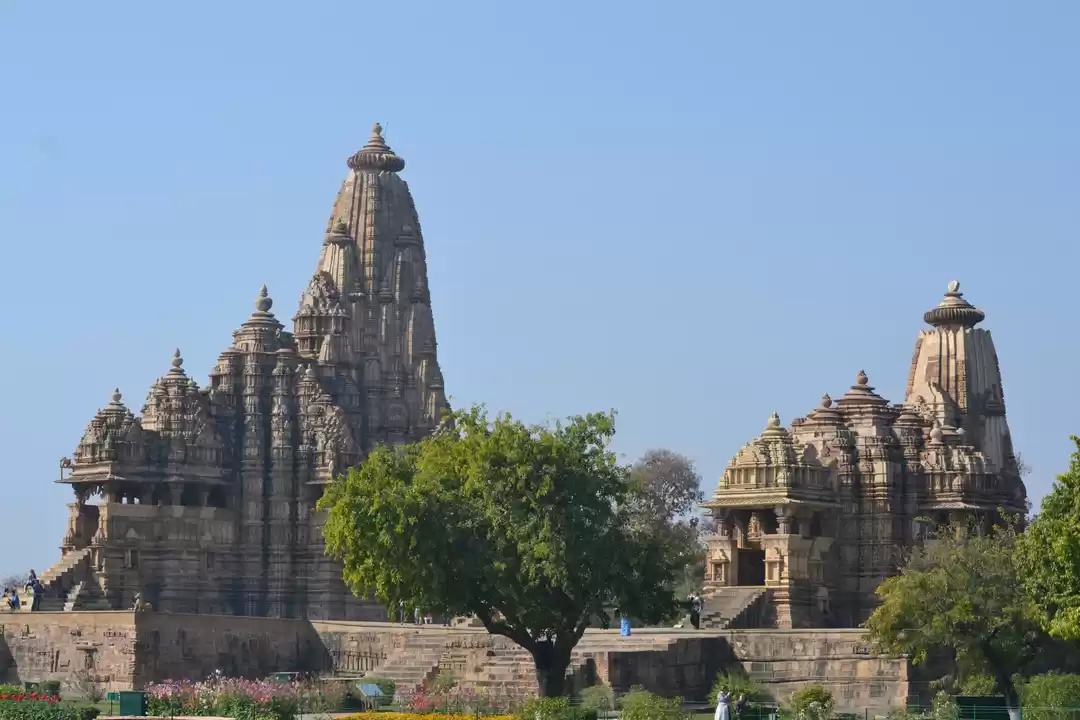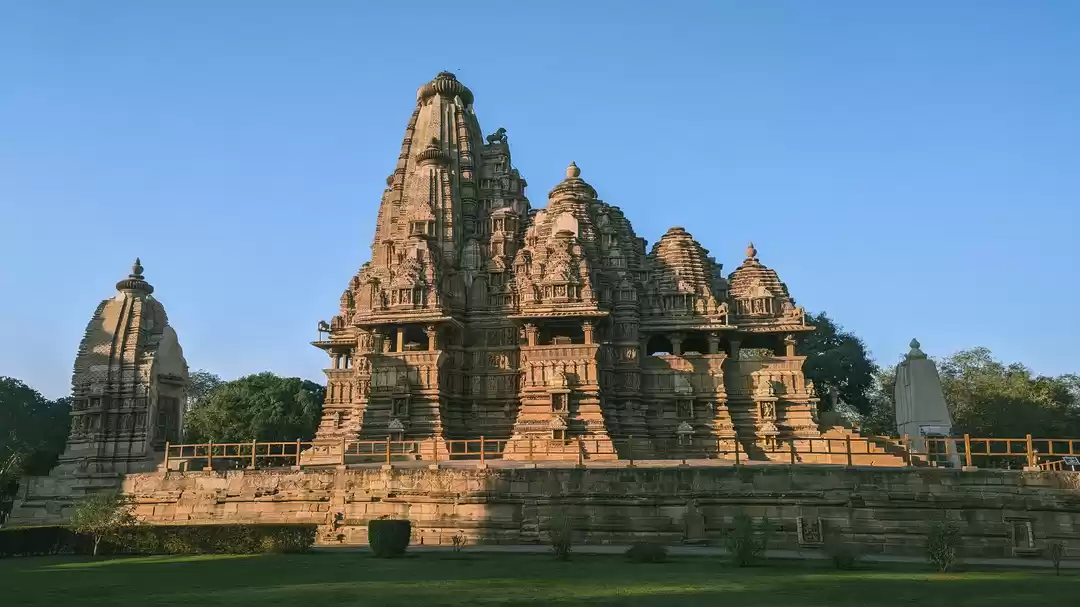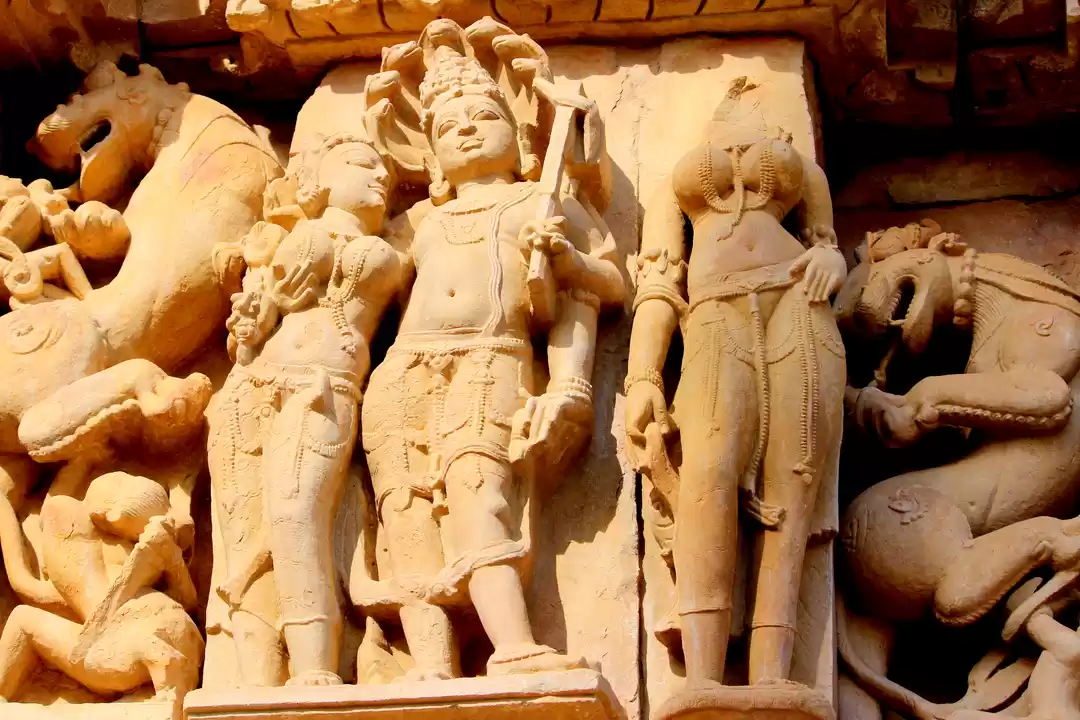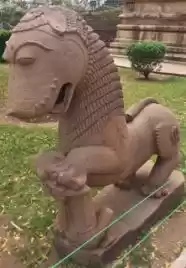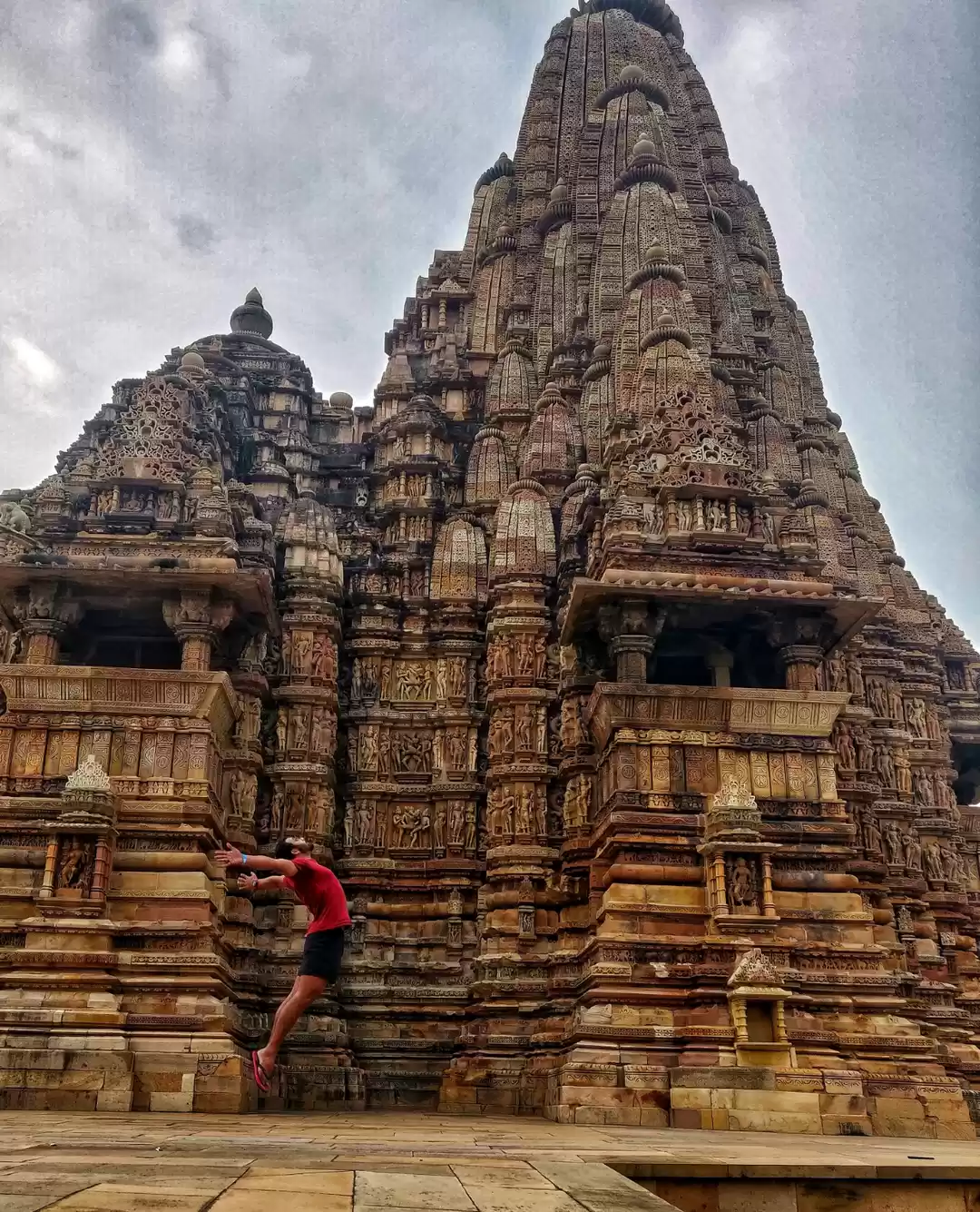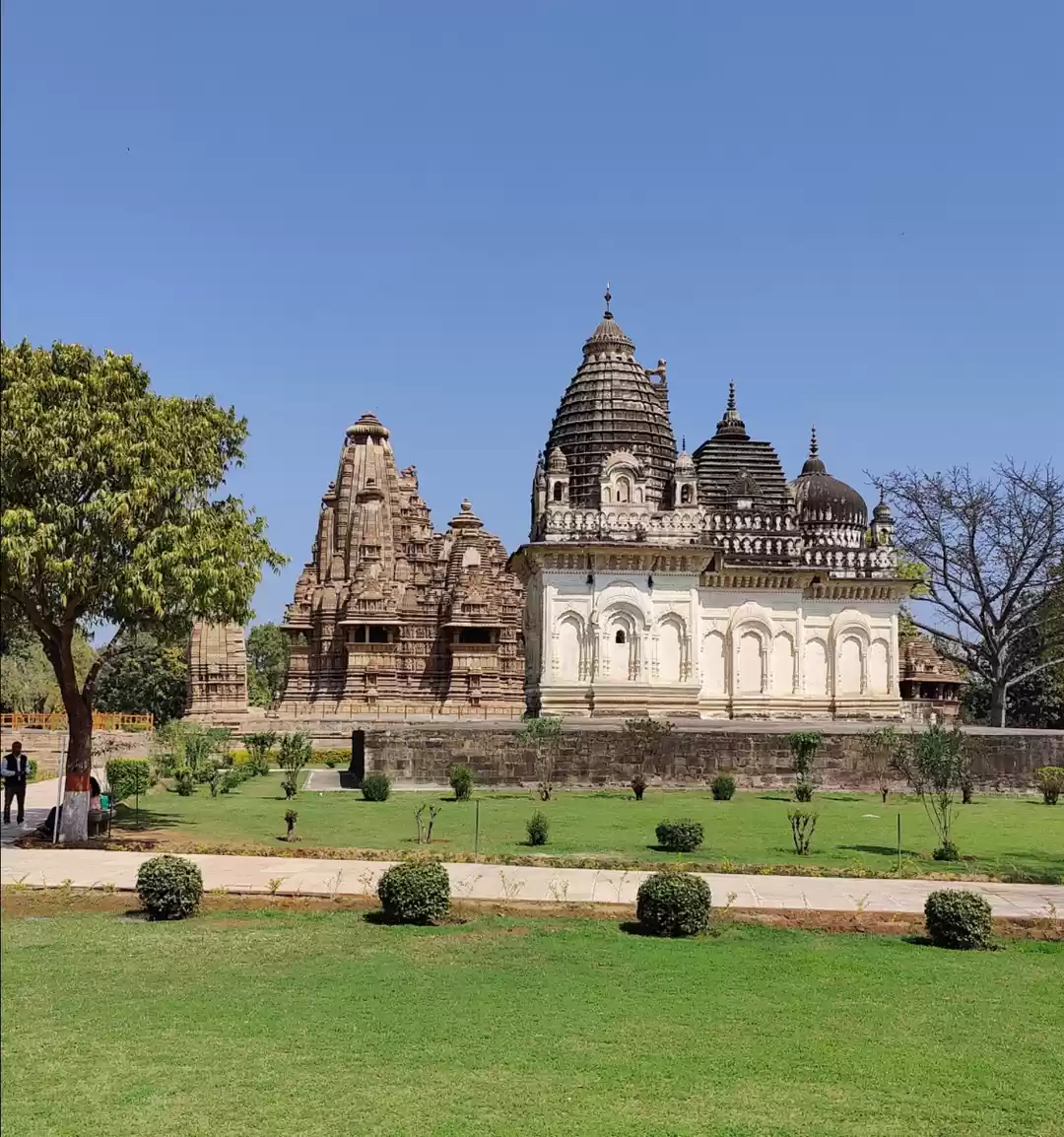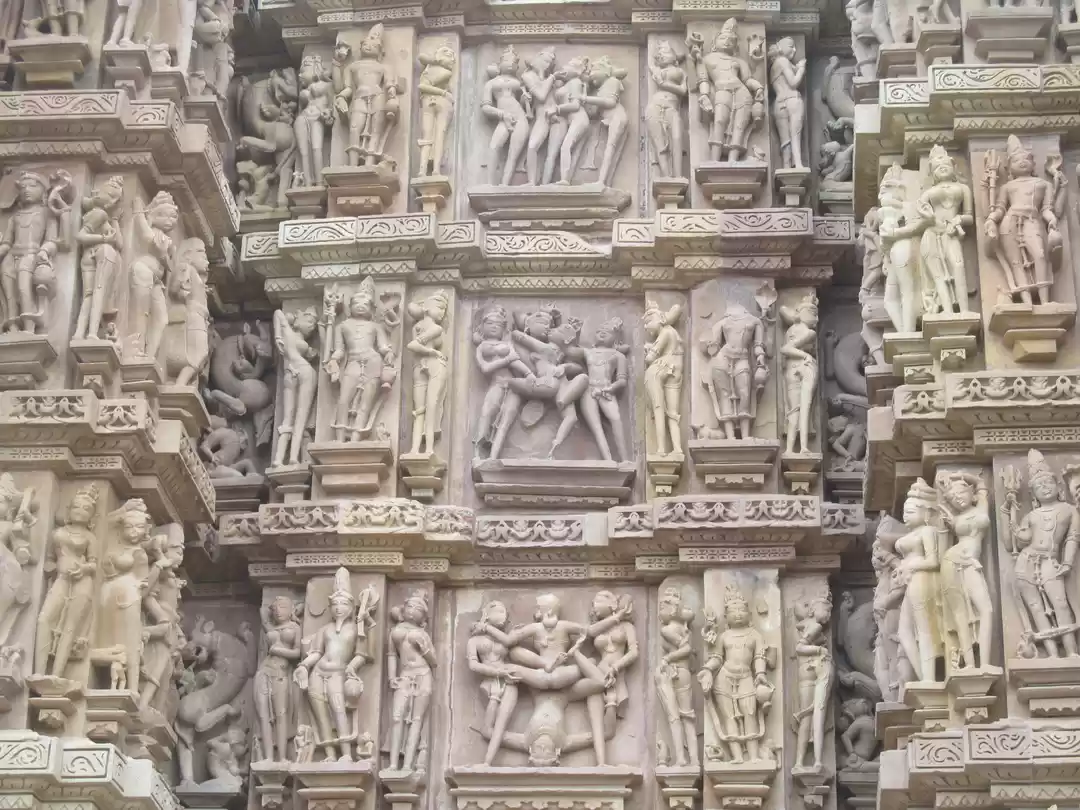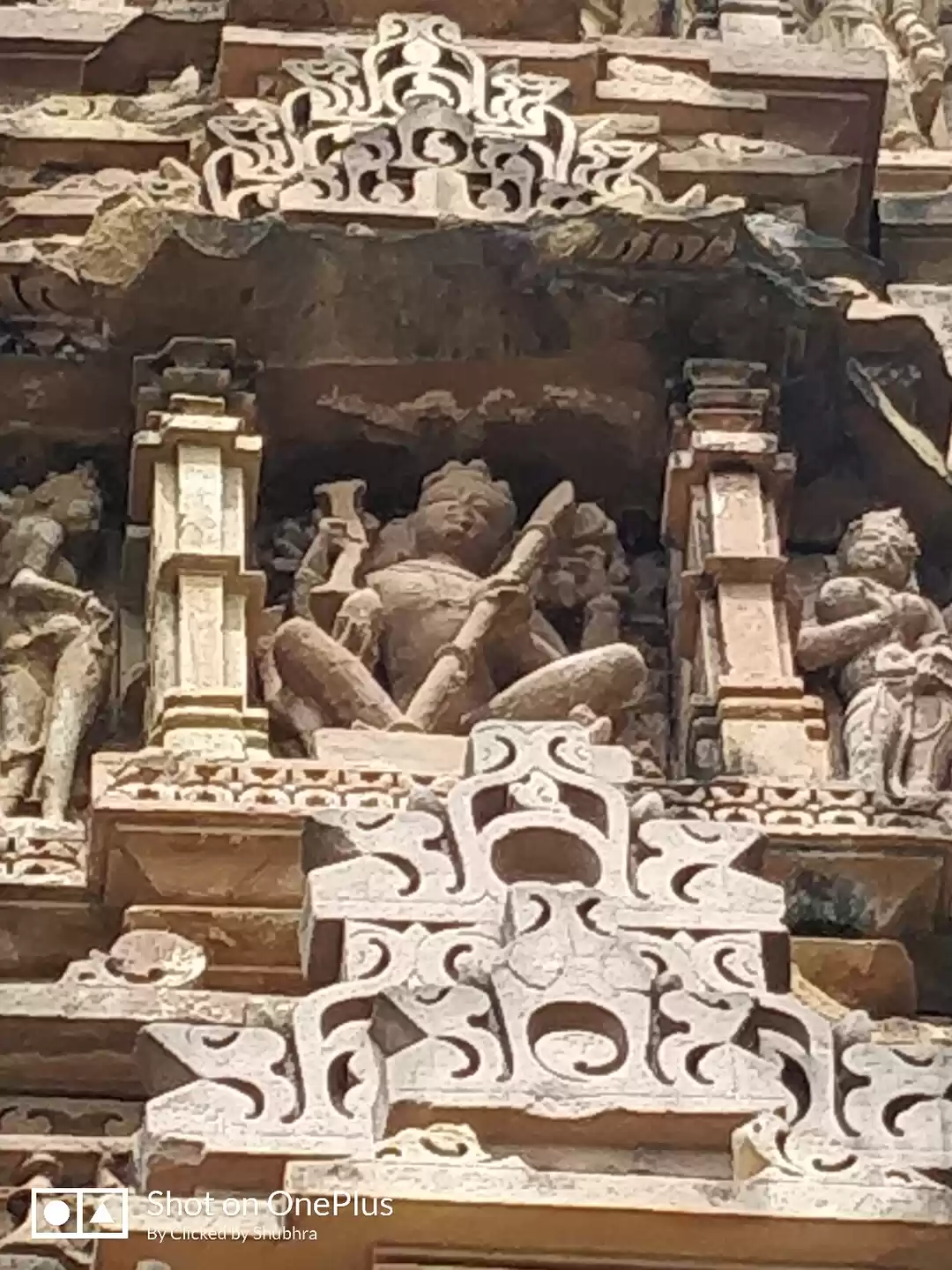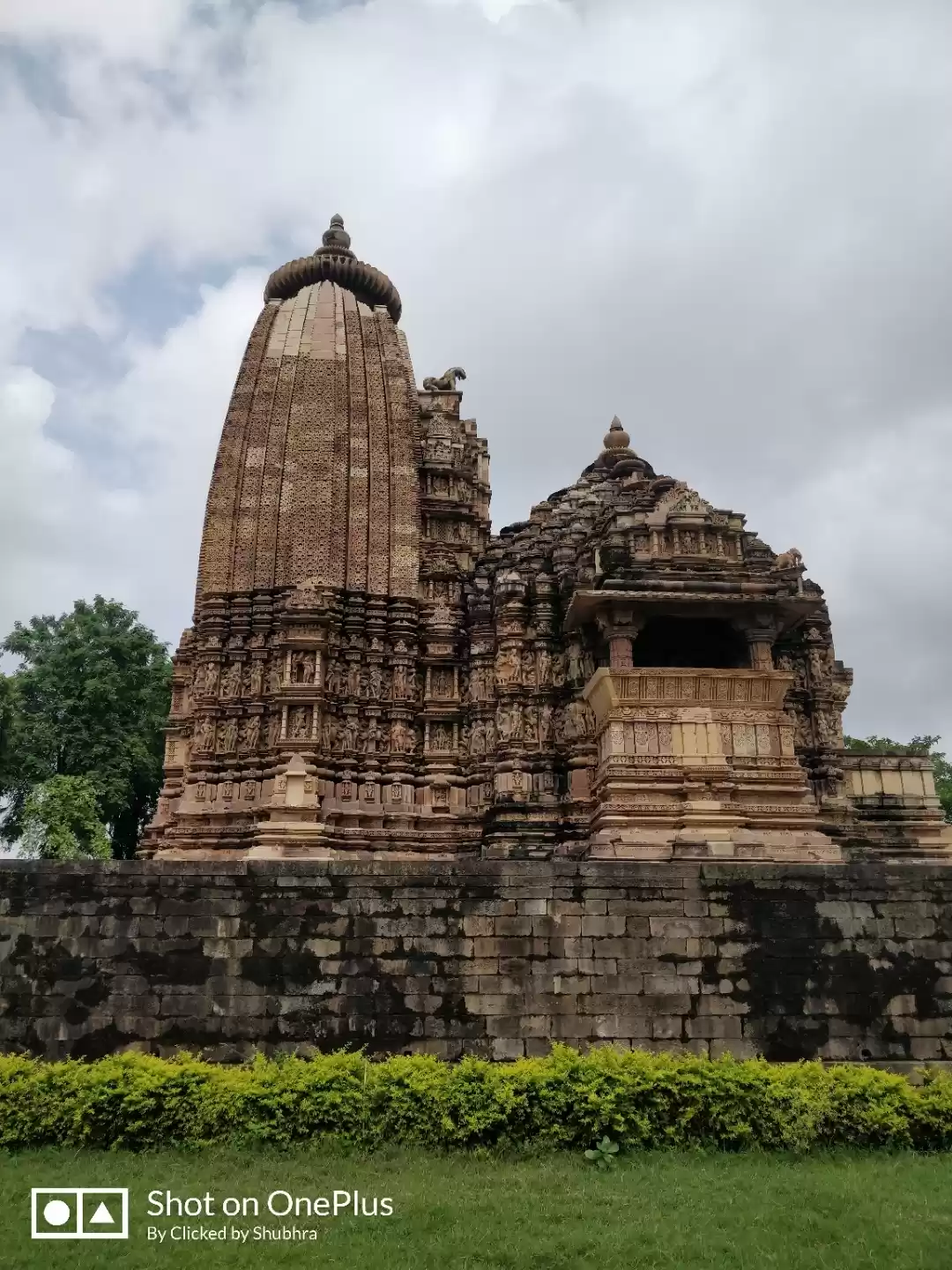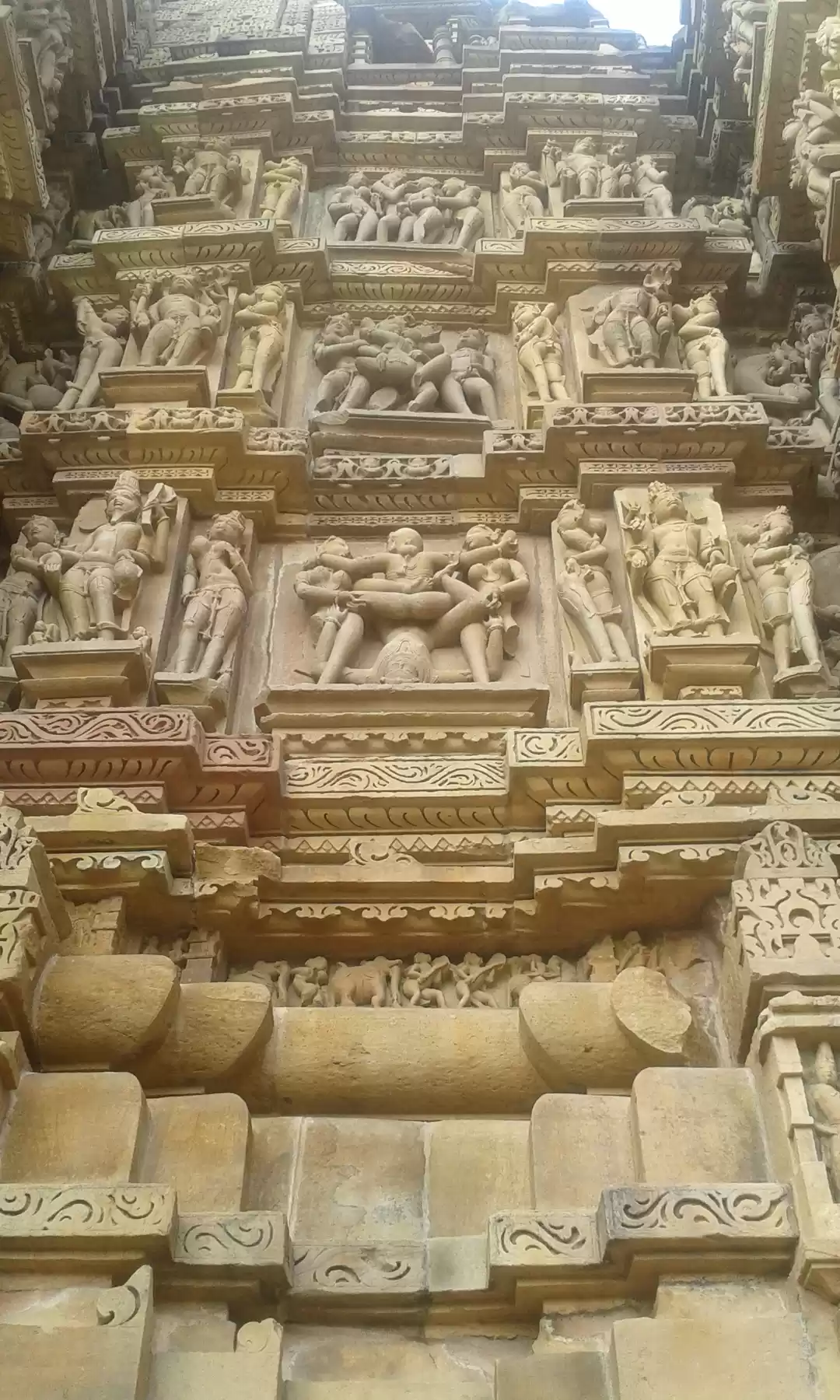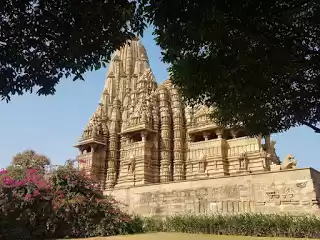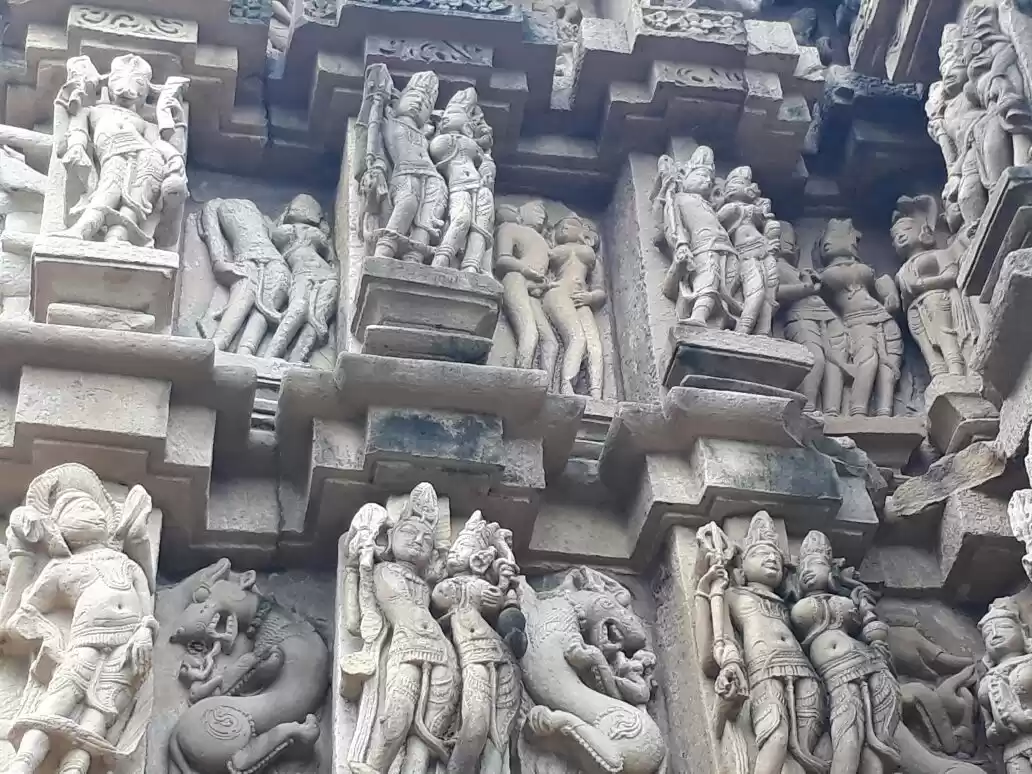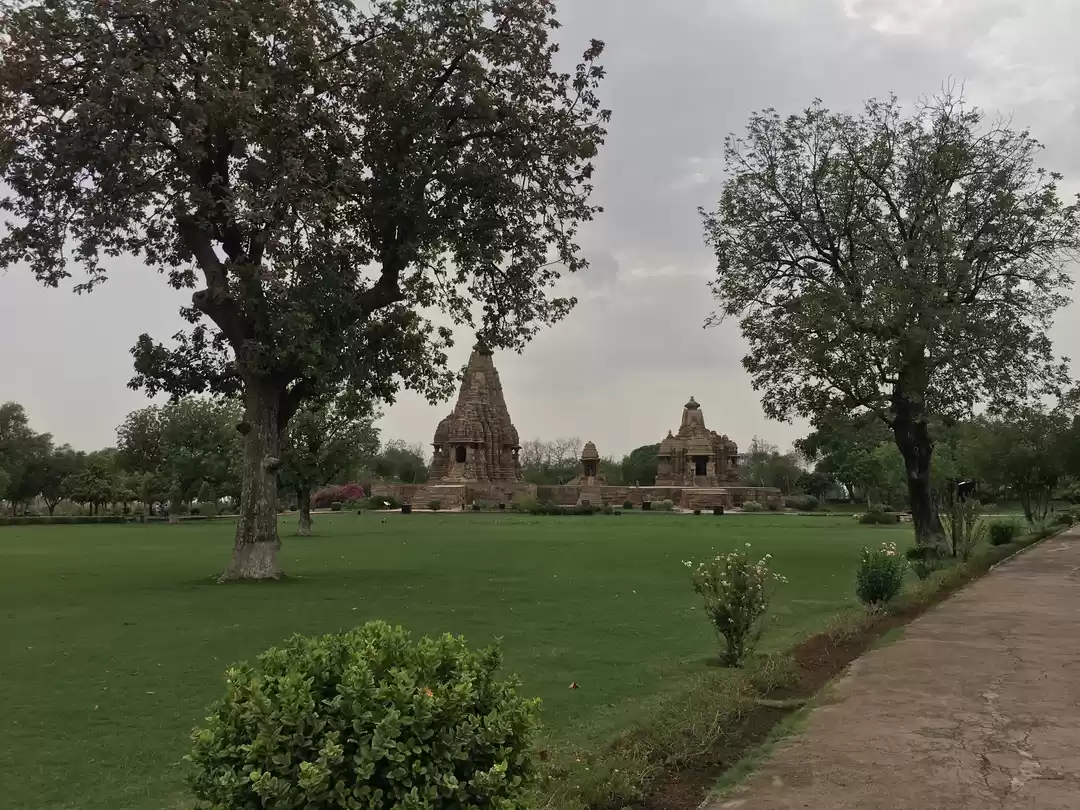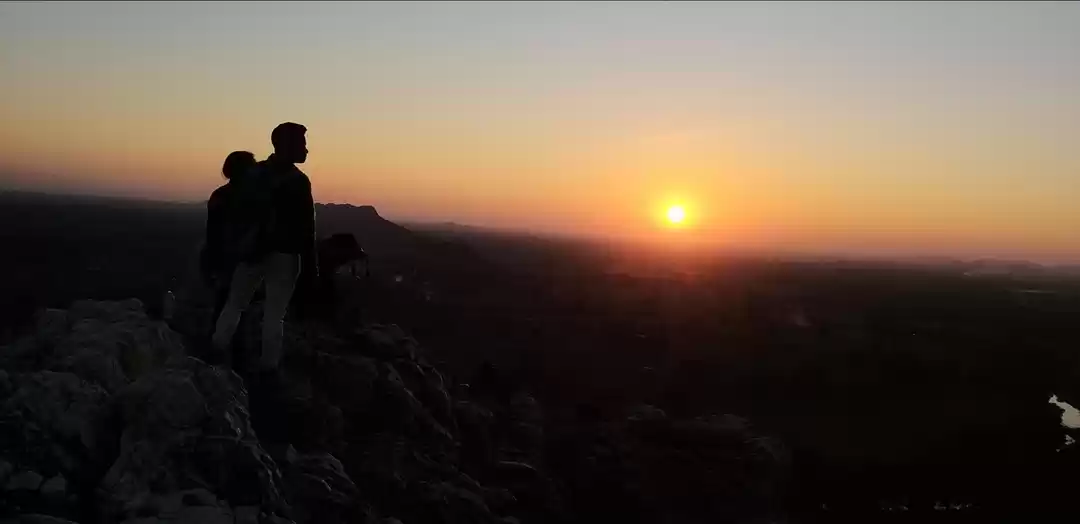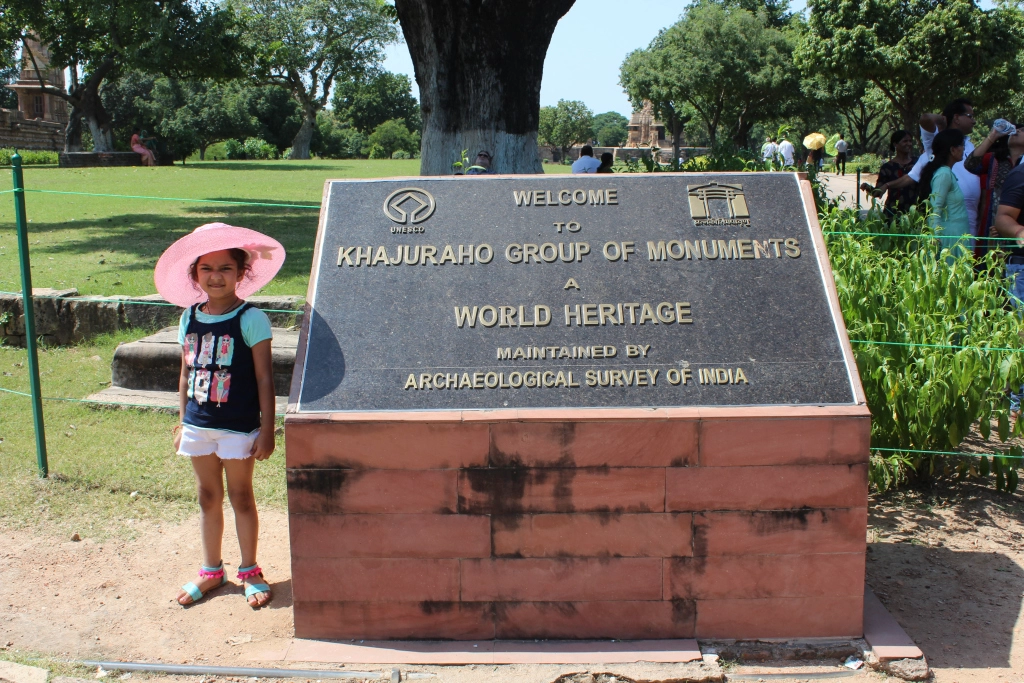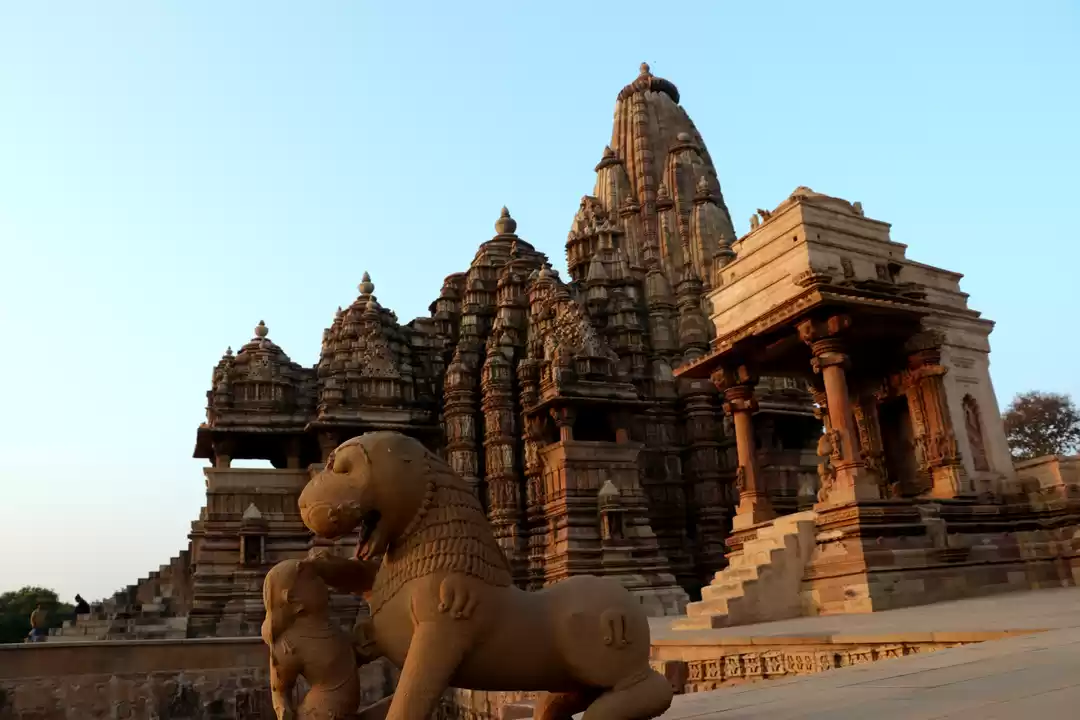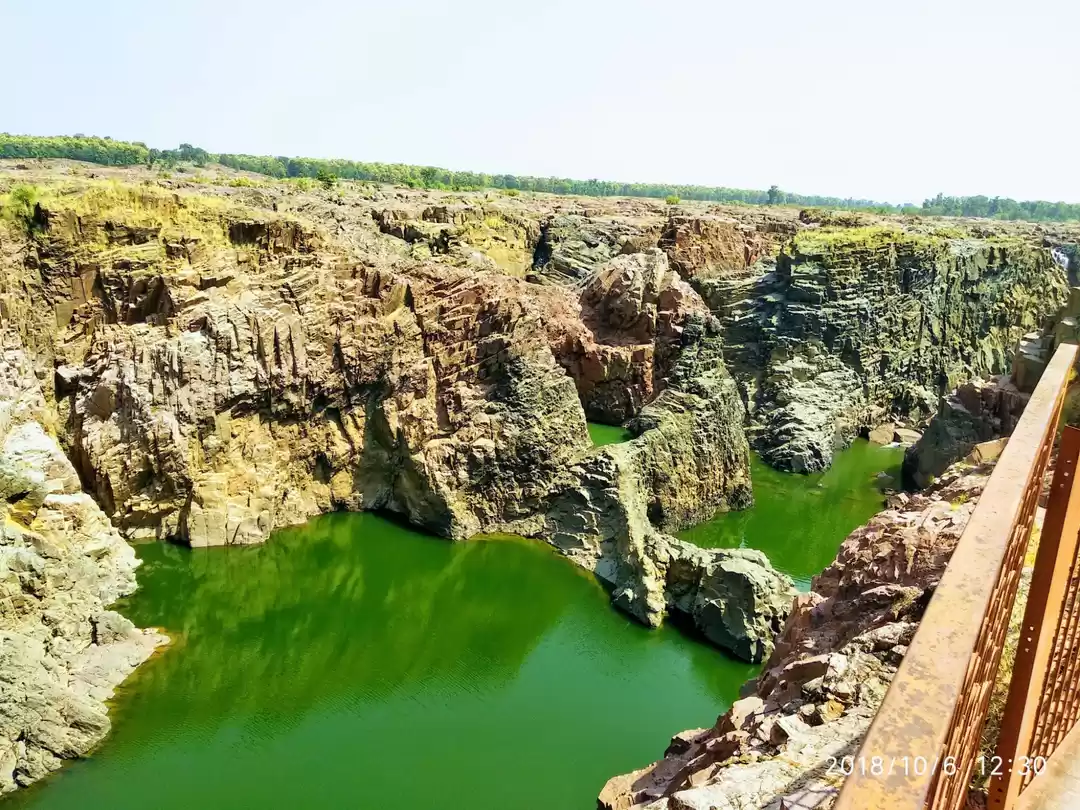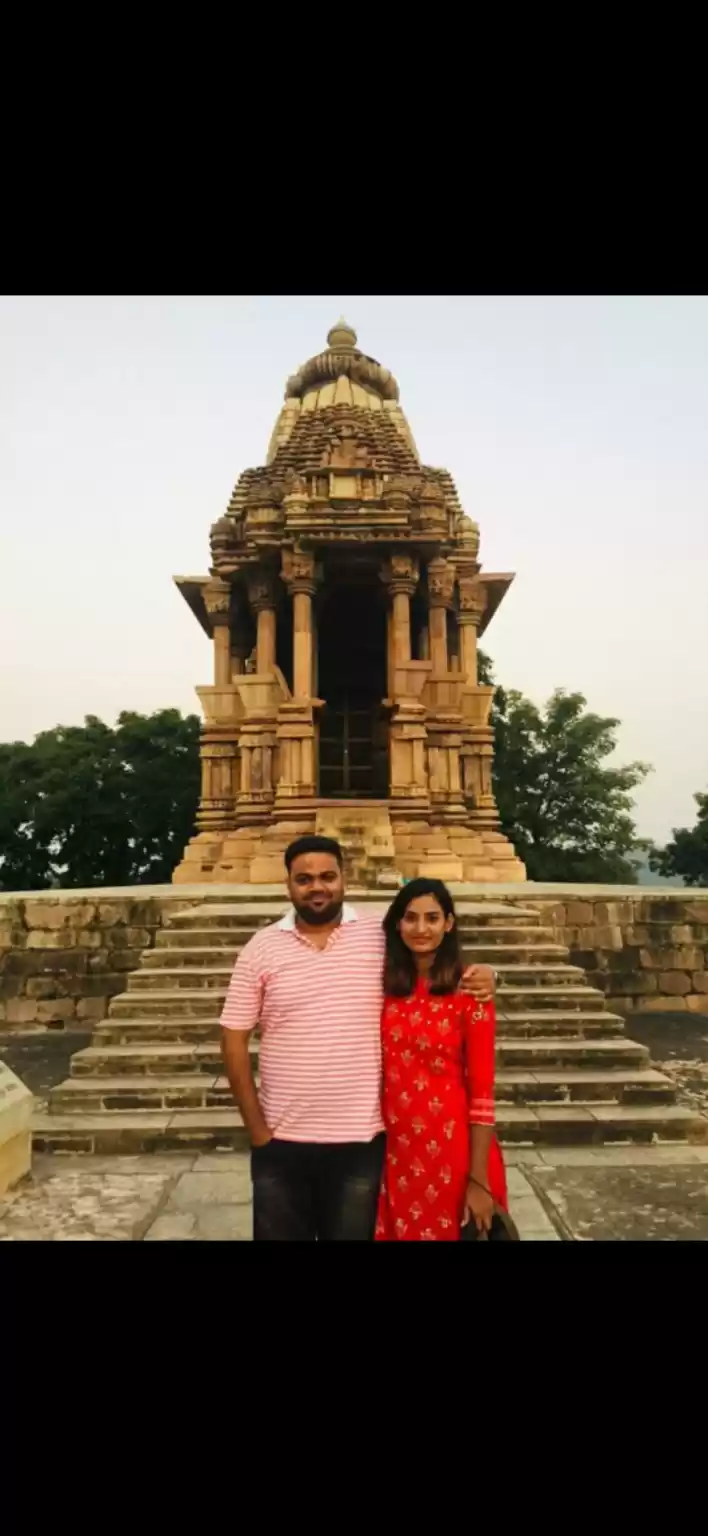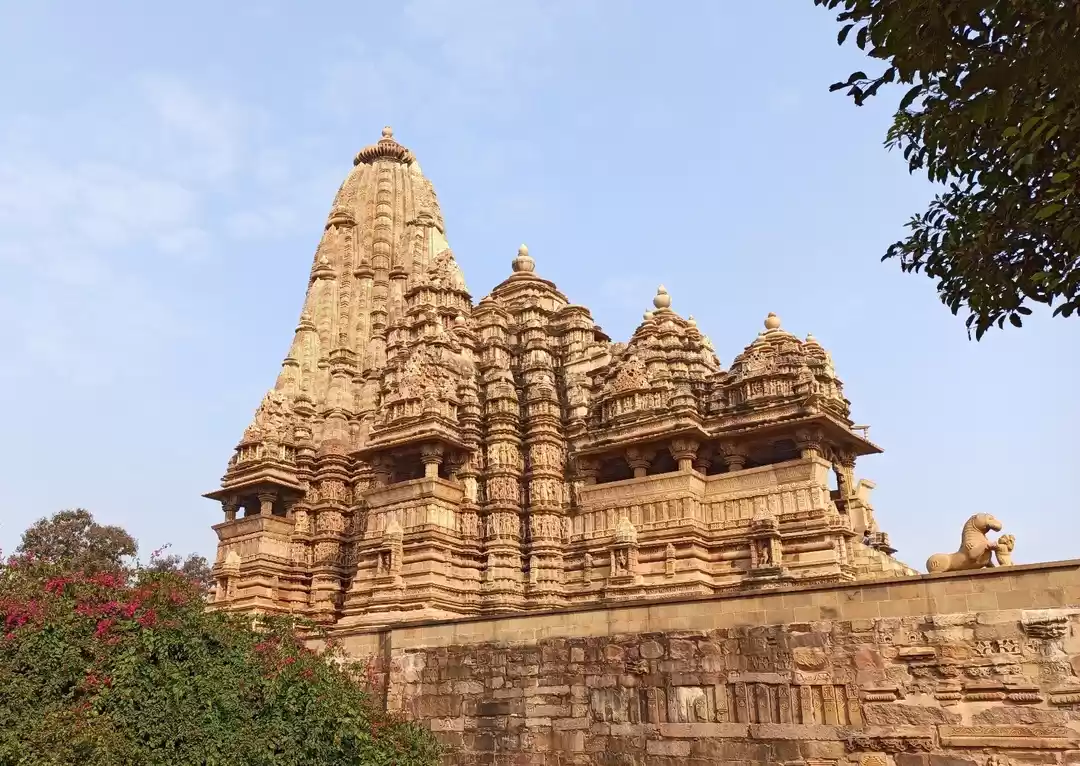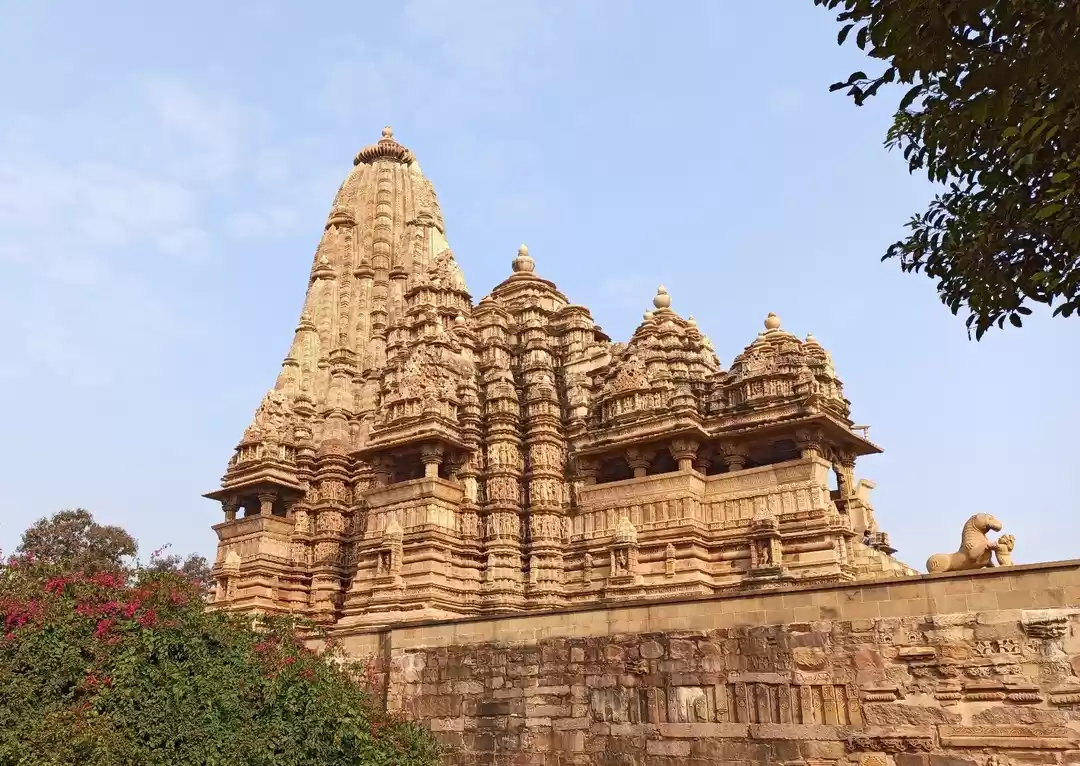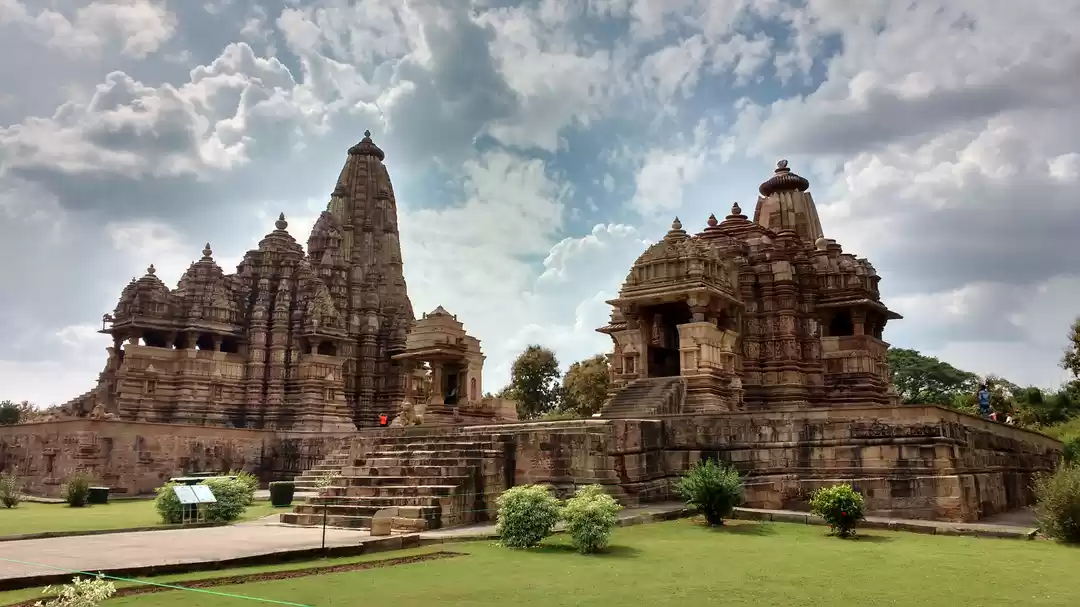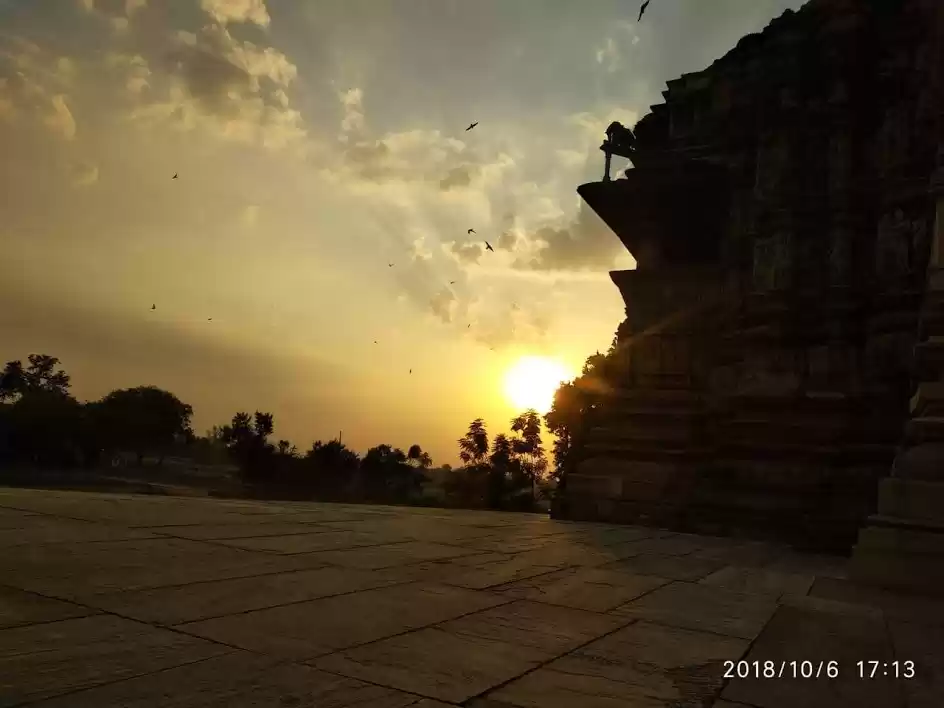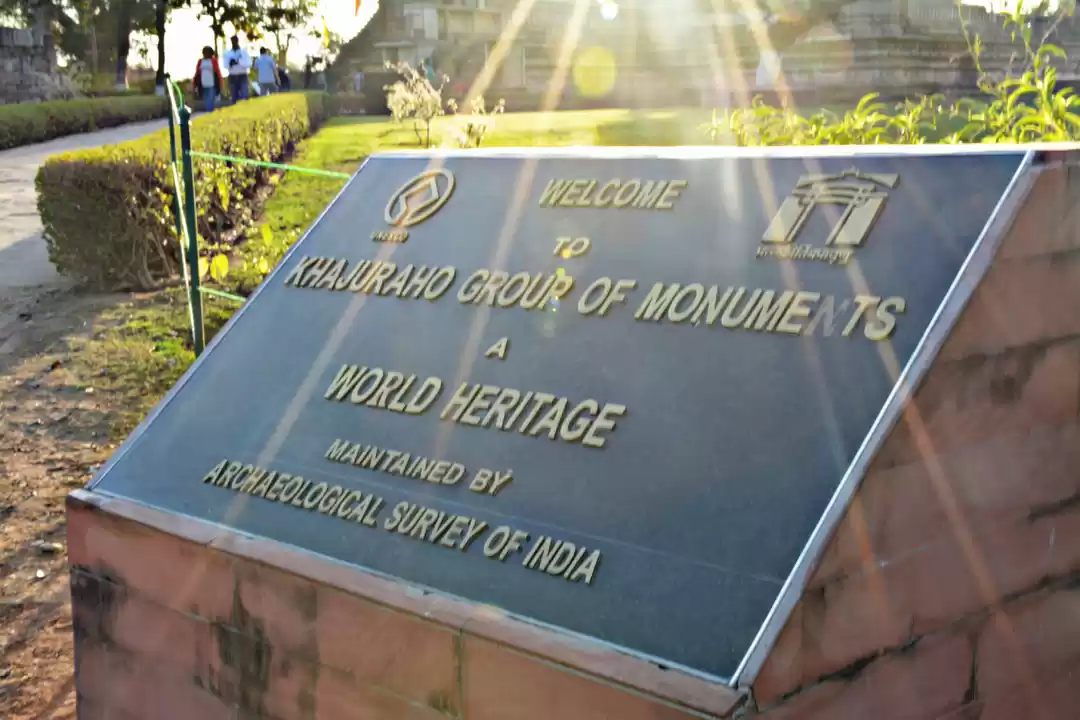











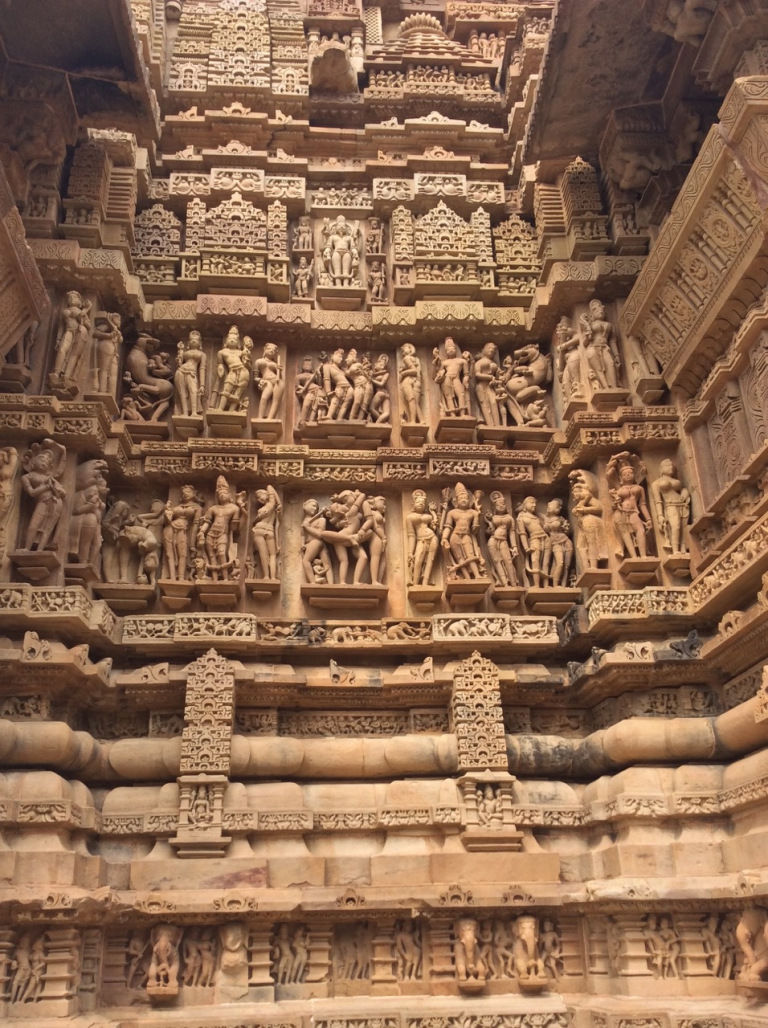
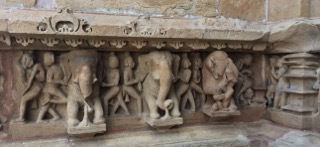






Introduction:
Google search Khajuraho and you will find a plethora of erotic images and it being called the Kama Sutra capital of the world. Truth be told, of the many thousands of sculptures adorning the walls of Khajuraho, only 10 % of the statues are erotic. But as far as marketing gimmicks go, it can be called the Kama Sutra capital of the world. Khajuraho is derived from . Hence (Dates in Sanskrit) and Vahak (Bearer in Sanskrit). It is a remotely accessible town in Madhya Pradesh, central India that is usually swarming with tourists and we had a lot of fun here.
History:
Legend has it that the first ruler of the Chandela dynasty, Chandravarman, was born out-of-wedlock to a beautiful damsel named Hemvati and the Moon God. Hemvati, who was seduced by the Moon-god, was worried for their child after the Moon God would return to his abode. As repentance, the God blessed their child and it is believed that this blessing caused the young Chandravarman to become strong enough to fight lions and tigers with his bare hands by the age of 16. He is also believed to have received a touchstone through which he could turn iron into gold. He was installed the king of Khajuraho and founded the Chandela dynasty, and after his mother’s death, he also began the construction of 85 temples at Khajuraho to wash away her sin.
Mythical legends apart, Chandelas, starting from Nanuk in the 9th Century AD, were vassals to the Pratihara dynasty which is credited with withstanding the attacks of Muslim rulers from the middle east. The Chandelas under Yashovarman Chandel declared themselves independent with the weakening of their overlords in the tenth century. They also attributed their lineage to the legend of Chandravarma to gain some divine link to the origin of their dynasty. They were great patrons of art and architecture and the temples at Khajuraho, Mahoba and Kalinjar stand testament to their passion.
Best season to visit:
Summers are as hot as hot goes, and the temperatures soar up to unbearable levels. The rainy season starts from June and goes on till August. Any time between Mid-June to February is a good time to visit. The Khajuraho Dance Festival is usually held sometime in February, which is a good time to visit.
How to reach:
Khajuraho is, as described earlier, not very easily accessible, the best option that we found was to travel by bus. Buses are available from Jhansi, which is in the Indian state of Uttar Pradesh, and also from Chhatarpur, which coincidentally is also the name of the district that Khajuraho is in. Buses from Jhansi to Chhatarpur are also available throughout the day; we travelled in one at 5 in the morning.The journey from Jhansi to Chhatarpur takes approximately 3.5 hours. The buses from Chhatarpur travel at random times with the earliest starting from 8.30 in the morning. The journey from Chhatarpur to Khajuraho takes about 1 hour. Do not expect a Multi-axle Coach or AC Bus from Chhatarpur. Buses from Jhansi are somewhat better in this aspect, though not AC or Multi-axle again.
Tip: Interstate buses are less frequent, but if it is a comfort that you are looking for, you can go for this option. Buses from Chhatarpur usually fill in as many passengers as possible before departure so that you may be delayed.
There is also an airport and a railway station, but the flights and trains are not as frequent as buses.There is one train out of Khajuraho in the evening.
Accommodation:
Try to get a hotel as close as possible to the Western group of temples. We stayed at Hotel Isabel Palace which was around 1.5 Kms away from the Western group of temples. A hotel that is closer to the main road would be better as there would be no issues in transport. Khajuraho has some good hotels, and you can easily find one in your budget.
Food:
Khajuraho receives some tourists including foreigners and can cater to a variety of cuisines – Indian, Italian, Lebanese and Mexican. There is a lot of street food as well, but we would strongly advise that you stay away from most street outlets unless you are used to eating street food or have a good immune system. Choose a room with complimentary breakfast so you do not waste time searching for food.
Tip: Stay away from this Agarwal Bhojanalay, a restaurant in a narrow lane that serves the worst food ever, period.
Transport:
To visit locations, you will need an(n) Auto-rickshaw/Tempo/Rickshaw with a driver. It is cheaper to hire one of these than hiring a taxi but beware the heat. If the weather is really good, you could also opt for a bicycle. The best way is to ask your hotel to help you out initially, a half-day trip to Raneh Falls and Ken Gharial Sanctuary costs around 600 INR by a Trickshaw (also called an onomatopoeic ‘Tuktuk’). We coupled it with a visit to the Eastern and Jain groups of temples and it cost us 800 INR. To visit the Western group of temples, it is better to pay for a one-way drop service rather than book a two-way taxi. Transport is easily available most times of the day and the rates are very reasonable.
Sights and places to see:
There are three main groups of temples – Western group, Eastern group and Jain group of temples. The Western group of temples is the more densely temple region. To the east lie, the Eastern group of temples (DUH!!!) and to their south lie the Jain temples. Also, Khajuraho is a base for many wanting to travel to Panna National Park.
For an offbeat place, try the Raneh falls and Ken Gharial Sanctuary, we went there late afternoon, and we were amazed looking at the colourful rocks and deep canyons. The entry fee to these two places depends on your mode of transport and number of people. The rate for a Tuktuk is 400 INR for 2 Indians.
15 kilometres to the north of Khajuraho are the Raneh falls on the river Ken; the dam upstream means the falls remain dry throughout the summer and most spring and a visit during this time will ensure that you see really colourful rocks.
Our guide gave us a crash course in Geology, about Igneous, Metamorphic, Basalt, Sedimentary and Granite rocks. He claimed that this was the longest canyon after the Grand Canyon. The sheer depth of the river gives one an idea of the mightiness of the river Ken and its inordinate taming by this canyon.
The waters down below are filled with many crocodiles and a few Gharials, a critically endangered species of crocodile native to northern India. Gharials are supposedly harmless and do not attack humans.
The Ken Gharial Sanctuary lets you test the harmlessness of Gharials by allowing you to take a boat ride in its waters. 3 kilometres in the jungle, riding through a jungle path, for 50 INR, you can enjoy a short boat ride in its populated reptile waters; although we were unable to see any crocodiles, except far (as is evident from the fact that we’re still alive). It is quite an experience to actually fear a small boat ride.
Tip: To see these reptiles, make sure you are there before the sun starts scorching, maybe around 9 AM.
It was hot when we visited, and we were exhausted, but the way back turned out to be very exciting when we started spotting a lot of Nilgai, spotted deer and foxes. Truth be told, we have been to some national parks, but never have we seen so many animals. Be sure to have a good camera ready.
Khajuraho light and sound show:
It is customary for us to start a tour of a place with a light and sound show about its history. The timings of the show change with seasons; in the summer, there are two shows – one in English which starts at 7.30 PM and the other in Hindi which starts at 8.30 PM- both on the campus of the Western group of temples. The show is quite long, and there are some moderately comfortable chairs for the 200 INR that you pay per person. For those without an interest in History, it becomes an overdose of history; it explains the history of Khajuraho and the Chandela dynasty in a somewhat monotonous manner, but in excruciating detail. We suggest this if you have a guide/guidebook.We also had no difficulty securing an auto to drop us to our hotel after our show ended at 8.30 PM.
Tribal Art Museum: An unexplored gem, this museum hardly gets any attention but is definitely worth a visit. We were not allowed to take any photographs inside, but the musical instruments in there are a sight to see. It was somewhat difficult for us to find; it is to the north-east of the western group of temples. This is a must visit.
Eastern group of temples:
The Eastern group is away from the hustle and bustle of the Western group. There are four main temples in this group – Vamana temple, Brahma temple, Javari temple and Ghantai temple. We did not visit the Brahma and Ghantai temples; we were short on time as we had spent a lot of time at Ken Gharial Sanctuary. The Brahma temple is one of the few temples at Khajuraho to have been built with granite.
The Vamana temple is dedicated to the dwarf Vamana avatar of the Hindu god Lord Vishnu; it is located near a lush green field. There is a Shikhara (spire) with a sanctum containing statues of Brahma and Vishnu in addition to a four armed statue of Vamana; the temple walls are adorned with numerous sculptures of Surasundaris (celestial beauties). The entire temple is on an elevated platform.
The Shikhara has been intricately carved inch by inch and the attention paid to detail are spectacular, this is what makes each of these temples special.
Javari temple is to the south of the Vamana temple and is much smaller than it (ironically) but is in no way inferior. It too is on an elevated platform. The origin of the name is still not clear as no Hindu god can be attributed to the name Javari.
The highlight of this temple is the Makaratorana, which is basically a gateway (Torana) with dragon or crocodile (Makara) sculptures. Makaras are considered protectors of doorways and thresholds. The ceiling at the entrance just behind the archway reminded us of the Dilwara temples at Mount Abu.
Another feature of this temple is that it does not have a Pradakshinapath (path to circumambulate the temple or sanctum) which is a common feature in Hindu temples.
It is said that this temple resembles the Chaturbhuj temple at Khajuraho, hence we did not visit the Chaturbhuj temple.
Coming on over to the reason why people visit Khajuraho in the first place – the Western group of temples. The main temples here are the Lakshmana temple, Kandariya Mahadev temple and Matangeshwar Temple. The entry fee is a paltry 10 INR if you are an Indian (5 USD otherwise). We opted for an Audio guide as the human guides were a bit too vociferous about the erotic sculptures, which made us slightly uncomfortable; it cost us a paltry 150 INR. The Audio Compass outlet is just to the left after the entry point. Be prepared to roam around a lot on foot, so dab your sunscreens and bring lots of water for rehydration. There is a small kiosk inside the premises, but it does not serve any food besides soft drinks and crackers; there are good restaurants outside the complex.
Commanded by our audio guide, temple we turned left to a Temple, housing a majestic 6 foot tall Nandi, the vehicle of the Hindu god, Lord Shiva; at the base of the statue is the Shesh Nag, a serpent. There are over 600 miniature statues on the Nandi statue and one could spend quite some time admiring these.
Just down the path from the Nandi temple is the oldest and very famous Lakshmana temple, dedicated to Lord Vishnu. The distinguishing feature of this temple is the Shikhara, which contains many smaller Shikharas. As the temple complex is on an elevated platform, there is a path around the entire complex containing the Lakshmana and another smaller temple. The sculptures on the bottom walls of the complex are trivial, and we will get on to those on the walls of the temple.
There was this row of war elephants that really caught our eyes; the ferocity in their eyes was depicted beautifully. This was also our first encounter with erotic sculptures at the western group of temples; statues of a couple engaged passionately in love-making, a lady with scratches (hickey type) on her back, were among the few we saw.
Of particular mention is this elephant which made us laugh; it has lost its ferocity and its attention to the couple nearby.
The insides are no less elaborate although though there is a lack of proper illumination and also some damaged sculptures. There is a statue of a four-armed Vishnu inside the sanctum sanctorum.
If we had to name the best temple in Khajuraho, we would clearly settle for this one – the largest temple of the lot, the Kandariya Mahadev built by King Vidhyadhara, which is dedicated to Lord Shiva. While the sheer magnitude of this temple inspires awe and would cause one to lose track of where one is going, the lack of a clear path does not make things easier. This temple was built by the kind to commemorate his successful defence against the very powerful ruler of Ghazni, Mahmud of Ghazni.
The elegantly carved Torana at the entrance of the temple was worth the number of steps that we climbed and the dancers engraved on theTorana seemed to welcome us.
The structure is highly symmetric, and the tall more than 100 foot tall Shikhara casts a huge shadow under which we clicked some our pictures. The inner sanctum is well-lit in contrast to other temples over here, and one can clearly see a white Shivling in the middle.
Acrobatic couples and groups indulging in love-making amongst themselves and a few disturbing sculptures of bestiality are the highlights of the exterior walls of this temple.
Chitragupta temple is a comparatively smaller temple, the most striking thing is that there is a depiction of dragon-like creatures on the exterior walls. There also was a lake between the Chitragupta and Kandariya Mahadev temples, covered now by a huge lawn instead. The temple is dedicated to the sun-god as is evident from the depiction of his chariot drawn by seven horses. It is also said to resemble the Jagdambi Temple (Also at Khajuraho).
The last of the age-old temples in the western group is the Vishwanath temple, tired as we were, we proceeded to it through the two small elephant statues at the entrance. Built by the king Dhanga, it is dedicated to Lord Shiva and houses the other Shivling in this complex.
With this we concluded our tour of the Western group of temples. We then exit the complex and went for a short visit to the oldest active site of worship, the Matangeshvara temple.
We have tried detailing most places in Khajuraho, but there are a lot more places left here just waiting to be explored, so we suggest you explore them yourself and let us know your experience in the comments section.
One question remains unanswered though – Why would a house of worship depict erotic images on its walls? One theory is that these temples were built during the time of the Tantrics who believed that Hedonism and indulgence in worldly activities would lead them to God. Another revolves around the concept that these were metaphorically placed on the outer walls of temples so as to help one rid oneself of the worldly pleasures before entering the abode of the divine. Another goes to say that in the olden days when students were trained in a Gurukul isolated from society for several years returned, these sculptures acted as a means for them to understand and prepare them for life in society. As interesting as these theories sound, we never really can be sure or properly understand, but only ponder upon and wander upon…
This trip was originally published on A SERIES OF FORTUNATE TRAVELS


